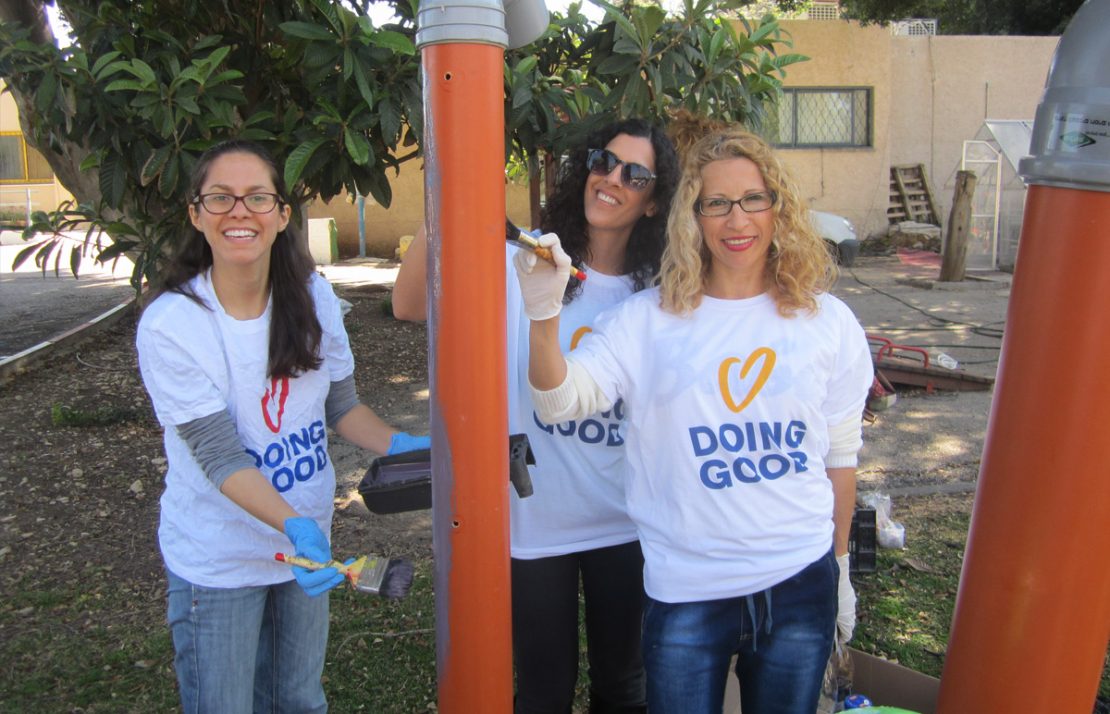
Millennials, who comprise the largest living generation in the U.S., care about causes. They are more likely than members of other generations to do business with companies associated with a cause and they like to work for companies that give back. They also account for more than one in three workers in this country and will make up nearly 50% of the workforce in a few years.
“Millennials are more receptive to cause marketing than previous generations and are more likely to buy items associated with a cause,” wrote Jeff Fromm, who speaks and consults on millennials. “They also expect companies to support the social issues and causes they care about and will reward them if they do.”
Non-millennials like to do business with companies that do good, too. So it makes sense to incorporate charity and volunteer work into a marketing strategy. But how do you do that without making it feel like marketing?
Choose the right cause.
If you want to make philanthropy part of your marketing strategy, it’s important to choose the right cause. If food is your business, align yourself with a program that feeds the poor. Look for a cause that needs your product or service. You want something that aligns with your corporate vision, but make sure that your efforts aren’t solely about self-promotion.
Get everyone involved.
The more the merrier when it comes to giving. When you’re working philanthropy into your marketing efforts, get as many people involved as possible. This year, RAGS, a Utah company that makes limited-stock rompers for kids, got employees and customers engaged in its giving project. It promoted a toy-donation event for a local nonprofit, Community Action Services, on social media and encouraged fans to use a hashtag to promote the event. It teamed up with a few other businesses and had high-demand gifts for people who came to the event with a toy to donate. Fifty people received a free backpack-style diaper bag and 100 people got a free RAG. There also were raffle prizes donated by the venue. With the toy-donation drive, the company helped a charity in the community and connected with existing and new customers.

Don’t over promote yourself.
It’s tempting to broadcast how great your company is and how much you’ve given to charity. But too much self-touting may have an adverse effect. Instead, encourage customers to promote your efforts with hashtags and shoutouts over social media. Talk to your employees about supporting your efforts via their social media accounts. Ask the nonprofits that benefit from your giving to highlight your charity work on their websites and social media pages. Spotlighting your charity work is OK, but make sure it doesn’t cross into bragging territory.
Give money and more.
Donating money is an easy way to support nonprofits, but being involved and making an effort in a cause is more effective. Sure, write a check. But encourage employees to give too — match their contributions if you can. Encourage volunteer service and do it yourself. Some companies provide paid hours for employees to volunteer at a chosen cause, like helping out at a food bank. Consider offering your services to provide job training or produce marketing materials for a nonprofit. Being actively involved in a cause is good for marketing and the community.
Stay in it for the long haul.
If you take a one-and-done approach to philanthropy, it won’t help your marketing strategy. Instead, support causes over the long term. Make it an annual event or an on-going effort — or both. Customers and others will see the connection between your business and giving — and you won’t need to mention it in all your marketing materials. If you want giving back to be part of your marketing strategy, you need to take a long-term approach.

Align with Your Brand Values
Before diving into charitable activities, ensure that the causes you support align with your brand values and mission. This alignment ensures authenticity and strengthens your brand identity. For instance, a company focused on sustainability might support environmental causes.
Partner with Nonprofits
Collaborate with reputable nonprofits to amplify your impact. These partnerships can provide your brand with credibility and access to resources and expertise in organizing and executing charity events.
Organize Charity Events
Host events such as charity runs, auctions, or fundraising dinners. These events not only raise funds for your chosen causes but also create opportunities for brand exposure and community engagement. Promote these events through your marketing channels to maximize participation.
Volunteer Programs for Employees
Encourage your employees to participate in volunteer programs. Offer paid time off for volunteer work and organize company-wide volunteer days. Highlighting these activities on your website and social media can improve employee morale and enhance your brand image.
Share Your Story
Document and share your charitable activities through blog posts, social media updates, and press releases. Use storytelling to showcase the impact of your efforts. Include testimonials from beneficiaries and volunteers to add authenticity and emotional appeal.
Leverage Social Media
Use social media platforms to promote your charitable initiatives. Create engaging content such as behind-the-scenes videos, live streams of events, and interactive posts. Encourage your followers to share their experiences and support your cause using dedicated hashtags.
Incorporate Charity into Campaigns
Integrate charitable components into your marketing campaigns. For example, donate a portion of your sales to a charity or launch a campaign where customers can contribute to a cause with their purchase. This approach can boost sales and enhance customer loyalty.
Measure and Report Impact
Track the outcomes of your charitable activities and report the impact to your stakeholders. Use metrics such as funds raised, volunteer hours contributed, and the number of beneficiaries reached. Sharing these results demonstrates transparency and accountability.
Continuous Engagement
Charity and volunteer work should be ongoing, not one-time events. Continuously engage with your chosen causes and communities. Regular involvement reinforces your commitment to social responsibility and keeps your audience engaged.

Incorporating charity and volunteer work into your marketing strategy is a powerful way to enhance your brand’s reputation, build stronger relationships with your audience, and make a meaningful impact on society. By aligning with relevant causes, partnering with nonprofits, organizing events, and leveraging social media, you can effectively integrate social responsibility into your brand’s ethos.
This article was originally published on Forbes and appears here with permission.




